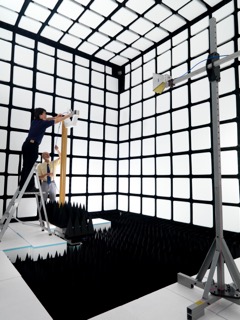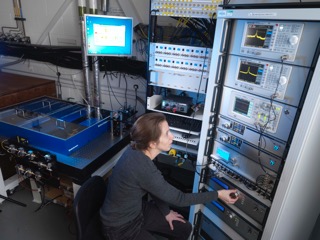Britain’s 5G will be rolled out in 2020 and it could help generate £55 billion (€61.40 billion) for our economy says the newly re-branded National Physical Laboratory (NPL). Could, mind you. Provided we don’t repeat the mistakes of previous generations.
Today’s 3G and 4G networks were built in a hurry and too much time and energy has been wasted as a consequence of bad standards. With a more measured approach a 5G network could run on a tenth of the power currently consumed and achieve infinitely more than today’s networks. Provided, of course, that this time we get a true measure of the equipment used and the network landscape, says Nick Booth.
In our last attempt, there was no accurate or relevant measurement of infrastructure and few agreed standards to operate on. Which meant there was no traceable way of proving a connection. This led to inefficiencies and incompatibilities, not to mention extra costs that were passed on to the consumer. Which is no good for anyone.
 The public don’t realise that the next stage, 5G, is a total departure from previous incarnations. It’s less like a new generation and more like a monstrous mutation. There are infinitely more chances that could be blown if we get it wrong.
The public don’t realise that the next stage, 5G, is a total departure from previous incarnations. It’s less like a new generation and more like a monstrous mutation. There are infinitely more chances that could be blown if we get it wrong.
Surprisingly, the government does seem to have grasped the importance of this. Which is why it has invested in the NPL, with a brief to lead an EU-wide project to ensure that 5G is a success. Unlike the US, Britain had no spectrum strategy for 3G and 4G. However, for the first time in decades, we have a government that has a clear plan for the impact of technology, says NPL CEO Dr Peter Thompson. NPL could be the silent partner to the IoT industry, he claims.
If we get it right by 2020, the implementation of 5G could deliver the connectivity, signal strength and slice-able networks we were promised. The success of the Met5G project hinges on the NPL’s ability to develop and test new infrastructure, signals and the real-world problems that will affect 5G performance.
At the NPL campus in Teddington, South West London, we saw two of the testing facilities. The Anechoic Chamber, which looks a room whose walls will move together and try to crush Indiana Jones, illustrated the amount of detail that can be applied to 3G and 4G testing. All its spikes are made of materials which can absorb reflections of sound and electromagnetic waves, to create the impression of being in an inifintely large space.
The Smart Antenna testing range is equally space age. Except for the equipment, which resembled a piece of circular sandpaper stuck to a wooden post. This, I’m told, is because the engineers have to build their own home grown antennae for creating a benchmark.
The lesson learned from recent tests is that there is often a massive credibility gap between the data rates promised by manufacturers and the actual performance. Kit makers and mobile operators must never be taken at their word.
When it comes to performance, operators and users have always had a very different version of the truth. This is because mobile operators benchmarked performance on their own terms.
 In benchmarking 4G, for example, they would pay for reports from companies whose speed testing methods included driving around taking arbitrary measures of upload speeds and response times in different places. This will never create a detailed enough map of network performance. To widen the survey sample a bit, they took steps to put software onto the handsets of the most advanced users.
In benchmarking 4G, for example, they would pay for reports from companies whose speed testing methods included driving around taking arbitrary measures of upload speeds and response times in different places. This will never create a detailed enough map of network performance. To widen the survey sample a bit, they took steps to put software onto the handsets of the most advanced users.
But that only tells you how a small subset of elite users is getting on. Tutela seems to have cracked the problem by creating a far wider survey sample. It did this by persuading 1,500 app developers to include a piece of code into their mobile apps, which can then report back all the necessary performance variables – such as signal strength, cell power and download speed. But the evolution of that process improvement took place years after 4G was a reality.
Hopefully, standards will be imposed on 5G a lot sooner.
The author of this blog is Nick Booth, freelance IT and communications writer
Comment on this article below or via Twitter: @IoTNow_OR @jcIoTnow










